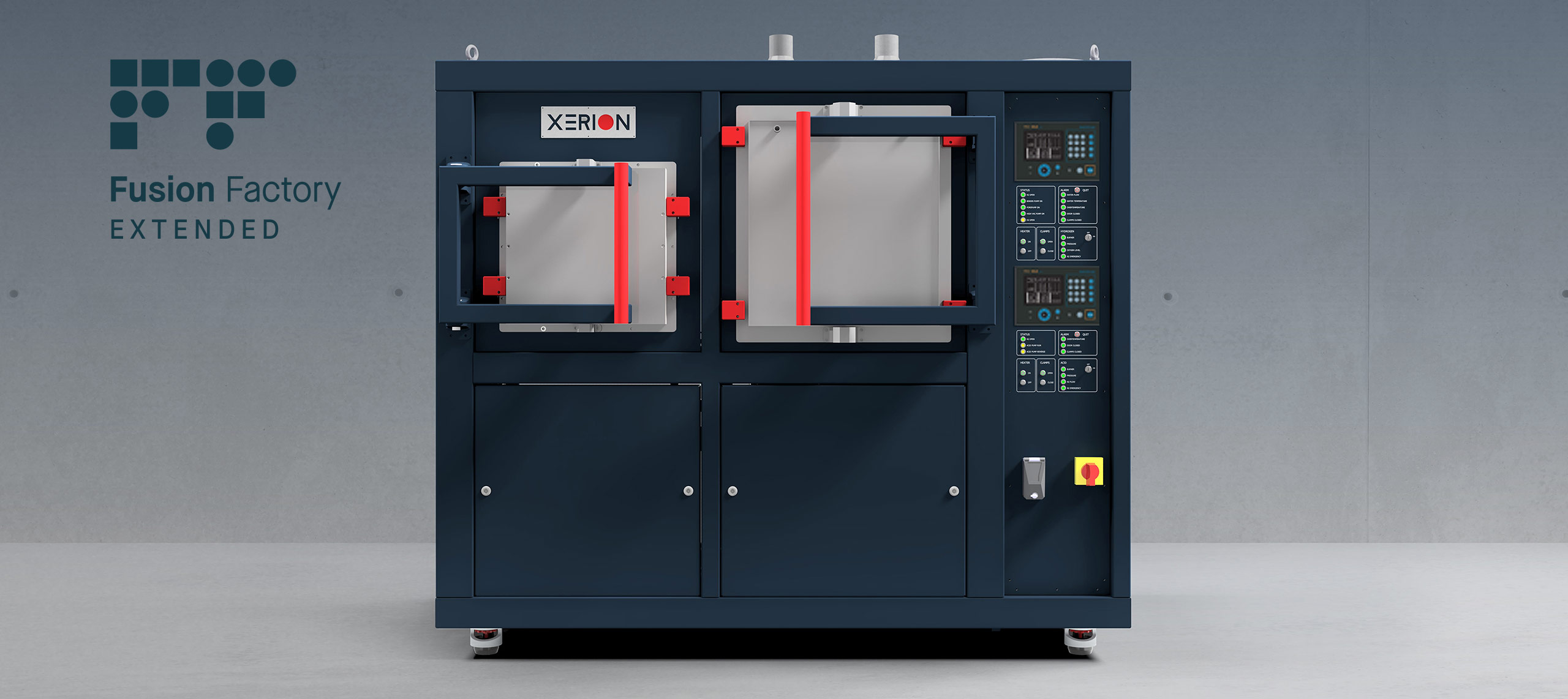Fusion Factory Extended
The manufacturer Xerion, with more than 20 years of experience in its market, has a perfect command of the issues of insulation, temperature and safety of furnaces, which makes it a partner of excellence in terms of quality and efficiency.
The Fusion Factory Extended consists of two modules :
- The catalytic debinding unit, which operates under nitrogen and acid gas at a maximum temperature of 160°C,
- The sintering furnace, which heats up to 1550°C under different atmospheres: nitrogen, hydrogen, vacuum, air.
This catalytic debinding and sintering process is very fast and lasts less than 24 hours if you use BASF Catamold or Ultrafuse materials! Indeed, this product is ideal if you are printing your parts with BASF pellets or filaments, and are looking for a solution for the post-processing steps.
Thanks to its expertise, Xerion masters the shrinkage issues, as well as the porosity of the parts during sintering. According to your needs, Xerion is able to adapt by modifying the characteristics of its products.
The market for additive manufacturing furnaces and debinding units
Today, metal or ceramic FDM and binder jetting processes are booming. These processes require three steps before the final parts are produced: printing, debinding and sintering. Once the printing step is complete, it is almost always necessary to debind the part, before finally sintering it to increase its mechanical propeeties.
Xerion’s Fusion Factory range offers products suitable for both types of debinding :
- The Fusion Factory for a solvent debinding
- Fusion Factory Compact and Enxtended for BASF materials
For sintering, their expertise is very wide, it is possible to sinter almost all metals and ceramics from 3D printing processes.
It should be noticed that these two post-treatment steps are critical and condition the density and final quality of the part. Xerion debinding and sintering furnaces not only ensure this quality, but also safety and efficiency unequalled on the market.
Particularly suitable for BASF metal materials
Ultrafuse® 316L and 17-4PH are innovative filaments for the production of metal parts.
These filaments are designed to be easily used on conventional FDM 3D printers. Some slight modifications may be recommended to achieve better print quality. BASF Ultrafuse® filaments combine greater design freedom with lower total cost of ownership. Printing metal parts is easier, faster and more affordable.
The filament is based on Catamold metal/ceramic pellets, developed and used by BASF for the MIM process.
The binder for these materials is based on polyacetal. This requires a special atmosphere for debinding, but this step is twice as fast as normal! Of course Xerion Fusion Factory Compact and Extended solutions are compatible with this atmosphere.
 FR
FR






